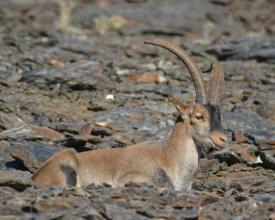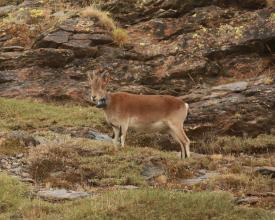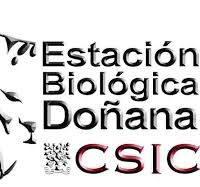
Management of sarcoptic mange in ibex (Capra pyrenaica) in the Sierra Nevada National Park and Natural Park.

The ibex is a species endemic to the Iberian Peninsula. The Sierra Nevada population is one of the most numerous and the most genetically diverse in its area of distribution. Its population numbers tend to grow, although they present oscillations, related to different environmental factors, including pathogens and/or parasites such as Sarcoptes scabiei, the agent of sarcoptic mange, its main disease, which is zoonotic in nature.
The incidence of sarcoptic mange in Sierra Nevada mountain goats over the last 30 years has been studied, comparing it with the population of the Sierra de Cazorla, where mange produced a mortality rate of more than 90 % at the end of the 80's of the 20th century. The results have allowed to improve the previous management procedures for this species.
Context
Challenges addressed
Location
Impacts
- Mountain goats can survive scabies, even in advanced stages. A protocol has been adopted whereby live-caught sick animals with less than 50% involvement are tagged for follow-up and monitoring. Those above 50% are euthanized for humane reasons.
- It has been proven that the management carried out has contributed to reduce the prevalence and maintain the disease at levels compatible with an endemic behavior, with the possibility of occasional epidemic outbreaks but not massive mortalities.
- Research is being carried out on the relationship between alleles of the Major Histocompatibility Complex (which regulates resistance to certain pathogens) and resistance to scabies.
- The study of mitochondrial DNA (cytochrome b) reveals the existence in Sierra Nevada of 17 of the 34 alleles described for this gene, which corroborates the high genetic diversity of this population.
- Numerous data are provided to demonstrate the ineffectiveness of feed medicated with ivermectin to combat scabies in the wild population. This is in addition to the toxic effects in the environment (e.g. coprophages).
- The knowledge acquired and the techniques used in ibex management are transmitted to the undergraduate and Master's degree students who complete their training in Sierra Nevada.










